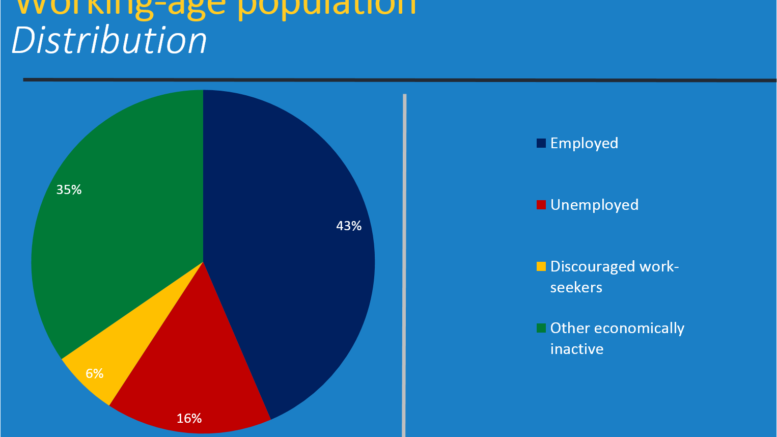Jul 27 2017 19:01

Cape Town – A million more South Africans could be unemployed by the end of 2018, and that’s a conservative estimate, according to Momentum and Unisa.
The latest Unisa Household Financial Wellness index shows that declining GDP growth rates, increasing levels of unemployment, stagnating job creation and sky-high levels of income and wealth inequality paint a gloomy picture for the rest of 2017, stretching into 2018.
The number of employed people grew from 14.1 million in 2011 to 15.95 million in 2016 and is expected to grow only marginally to 15.97 million by the end of 2018, Unisa and Momentum said in a statement.
At the same time the number of unemployed increased from 4.6 million in 2011 to 5.9 million in 2016 and will be about 7.2 million at the end of 2018, which means that there will be about 1.3 million more unemployed people at the end of 2018 compared to the end of 2016.
“The unemployment rate increased from 24.8% in 2011 to 27% in 2016 and could be as high as 31% by the end of 2018 should current economic, demographic and employment trends continue,” the statement read.
Meanwhile, the production elasticity of employment which indicates the elasticity between employment growth and GDP growth declined from 0.7 in 2011 to -0.2 in 2015 and are expected to be below 0.3 in 2017 and 2018.
“While the production elasticity of employment is on the decline the production elasticity of real compensation increased from 1.8 in 2011 to 3.2 in 2015 and is expected to be about 4.0 in 2017 and 2018. This is indicative of growing compensation inequalities – whereas employment is stagnating compensation is growing strongly with the implication that a small percentage of income earners are cashing in big time,” Unisa and Momentum noted.
Low growth expectations
According to the data, GDP growth rates declined from 3.3% in 2012 to 0.3% in 2016 and are expected to be below 1% in 2017 as well as 2018.
“During the past year economists have been downgrading their economic growth expectations for 2017 and 2018 continuously,” Momentum and Unisa said.
The impact of the increasing economic stagnation on household finances is clear from the results of the Index for the period 2011 to 2016.
During the review period Financial Wellness index rates increased marginally – from 64.1 in 2011 to 67.3 in 2016. This represents growth of about 5% over five-year period.
“Given that GDP growth is expected to stagnate over the period 2017 to 2018 it is expected that financial wellness levels will also stagnate over this period,” Unisa and Momentum said.
Household indebtedness
Financial Wellness research revealed that at least three quarters of South African households are under financial pressure. Some of the pressures were caused by variables outside of their control, while others emanated due to households’ own actions or inactions.
The variables over which they have no or little control include stagnating economic growth, high levels of unemployment, and volatile changes in the value of the rand, a severe drought, policy uncertainty and political instability. These resulted in low levels of business confidence, higher prices, retrenchments, exclusion from participation in the economy and an increase in the number of children born in poverty.
There are, however, also many households that are under pressure due to bad management of a number of things that are within their control, Unisa and Momentum said.
“These include low levels of financial literacy, absence of comprehensive financial planning, such as a lack of proper budgeting, conspicuous consumption, wrong use of credit, very high levels of indebtedness, no provision for emergency expenses and insufficient provision for retirement and protection.”
http://www.fin24.com/Economy/one-million-more-could-be-unemployed-in-sa-by-end-2018-20170727-2

